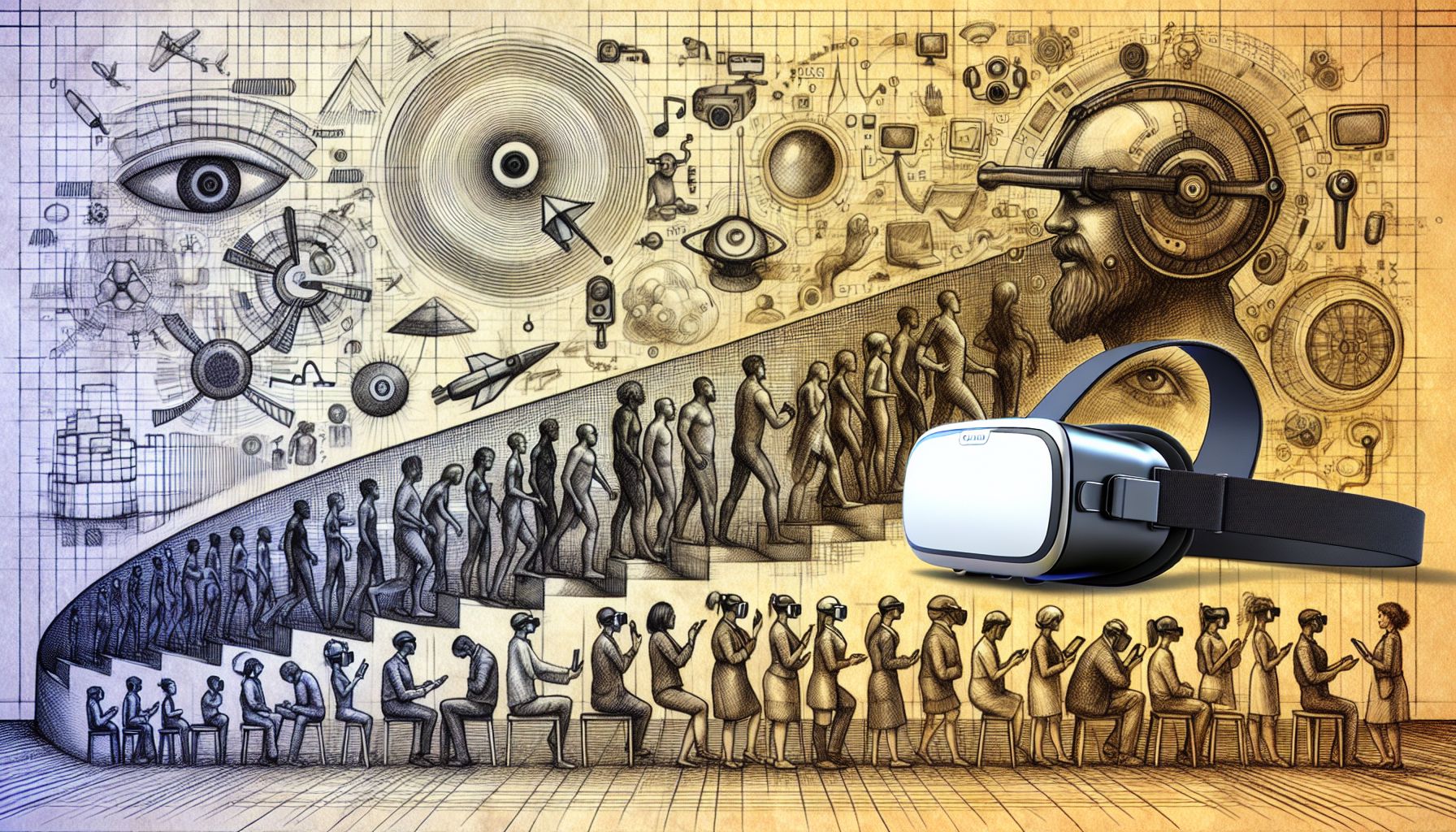📌 Let’s explore the topic in depth and see what insights we can uncover.
⚡ “Believe it or not, the seeds of virtual reality were planted long before the digital age, dating back to the 19th century. Dive in, as we journey through time from a panoramic painting to the Oculus Rift, tracing the fascinating evolution of VR.”
Have you ever found yourself so engrossed in a video game or a movie that you wish you could just jump right into the screen and become part of that world? Well, thanks to Virtual Reality (VR), this is no longer just a whimsical fantasy. VR technology has revolutionized the way we interact with digital content, creating immersive experiences that are as close to reality as it gets. In this post, we’re going to take a fascinating journey back in time to unearth the roots of Virtual Reality. From its conceptual beginnings to the cutting-edge Oculus technology of today, we’ll explore how VR has evolved over the decades. So buckle up and put on your virtual seatbelts - we’re about to embark on a history tour like no other!
🕰 The Conceptual Beginnings of Virtual Reality

"Digging Into the Genesis of Virtual Reality"
The idea of a virtual world where one could immerse oneself goes back even before the advent of computers. In the 1930s, science fiction writer Stanley G. Weinbaum proposed the idea of a pair of goggles that would enable the wearer to experience a virtual world with holography, smell, taste, and touch. Although his idea was purely fictional, Weinbaum’s Pygmalion’s Spectacles set the stage for what would become VR.
Let’s fast forward to the 1960s when Ivan Sutherland, often referred to as the ‘father of computer graphics’, developed the first VR/AR head mounted display system, known as the Sword of Damocles. It was a large and intimidating piece of equipment, but it was the first step in turning VR from a concept into reality.
🎮 The Gaming Revolution: VR Enters the Scene
The 1980s and 1990s were a pivotal time for VR technology as the video gaming industry began to take off. Companies like Sega and Nintendo were hot on the trail of VR, eager to take gaming to the next level.
In 1991, Sega announced the Sega VR headset for the Sega Genesis console. The headset was equipped with head-tracking technology, stereo sound, and LCD screens in the visor. Unfortunately, the Sega VR headset never made it to the market due to concerns about causing motion sickness and other health issues.
Virtual Boy by Nintendo, released in 1995, was a 3D gaming console that resembled VR technology. However, it wasn’t a true VR device as it lacked head-tracking capabilities. Though it was innovative, it was a commercial failure due to its high cost, discomfort in use, and lack of immersive VR experience.
Despite the early setbacks, these attempts marked a significant step forward for VR, demonstrating its potential in gaming and beyond.
💼 Virtual Reality in Business and Industry
While gaming was the most visible application of VR in its early days, the technology was also making inroads in other fields. Industries such as architecture, healthcare, and the military started leveraging VR for various applications. For instance, architects began using VR to create 3D models of their designs. This allowed them to identify potential issues before construction, saving time and resources. In the healthcare industry, VR was used for therapy and rehabilitation, surgical training, and to alleviate the fear of medical procedures. The military employed VR in flight simulations, battlefield simulations, virtual boot camps, and more.
These applications highlighted the wider potential of VR beyond just entertainment.
🎯 The Advent of Oculus: Modern VR Takes Shape
In 2012, a Kickstarter campaign for a device named the Oculus Rift blew past its fundraising goal, signaling a renewed interest in VR. Created by Palmer Luckey and later acquired by Facebook, the Oculus Rift was a high field of view, low-latency, consumer-priced VR headset that promised to deliver immersive VR experiences like never before.
The Oculus Rift, along with its successors like the Oculus Quest and Quest 2, have since set the standard for VR technology. With improved resolution, tracking capabilities, and comfort, these devices have brought VR into the mainstream, opening up new possibilities for gaming, social interactions, business applications, and more.
The Oculus has also sparked competition in the VR space, with companies like HTC and Sony releasing their own VR headsets, pushing the boundaries of VR technology even further.
🧭 Conclusion
The journey of Virtual Reality from concept to Oculus has been a thrilling roller coaster ride, filled with exciting breakthroughs and sobering setbacks. From the fictional idea of Stanley G. Weinbaum to the pioneering work of Ivan Sutherland, from the ambitious attempts by Sega and Nintendo to the revolutionary Oculus Rift, VR has come a long way. Today, VR has permeated different aspects of our lives, from gaming and entertainment to business and healthcare, making the virtual world an integral part of our reality. As technology continues to advance, the future of VR looks brighter than ever, promising more immersive and exciting experiences. So, whether you’re a gamer looking to engage in a heart-thumping battle, a movie enthusiast wanting to step into your favorite film, or a business executive exploring new ways to train your team, Virtual Reality has something to offer you. Strap on your VR headset and prepare to experience a world beyond the confines of reality!
⚙️ Join us again as we explore the ever-evolving tech landscape.
